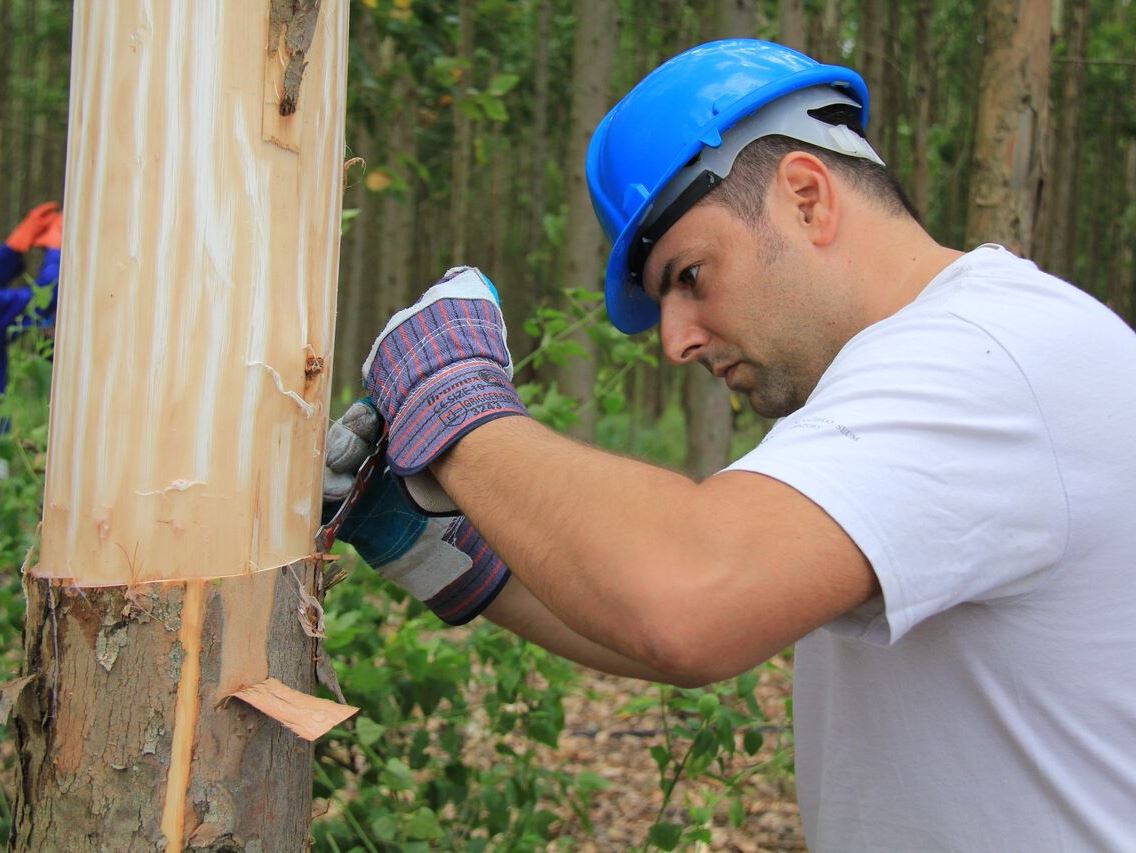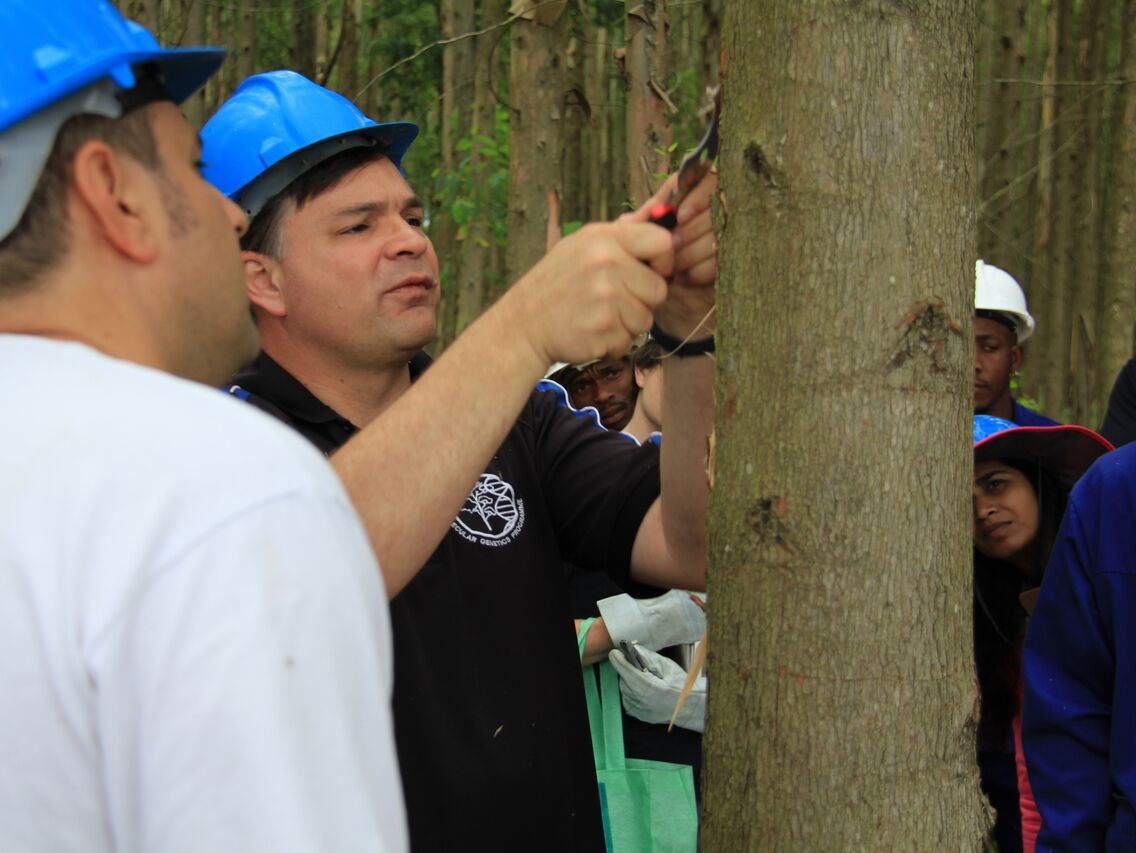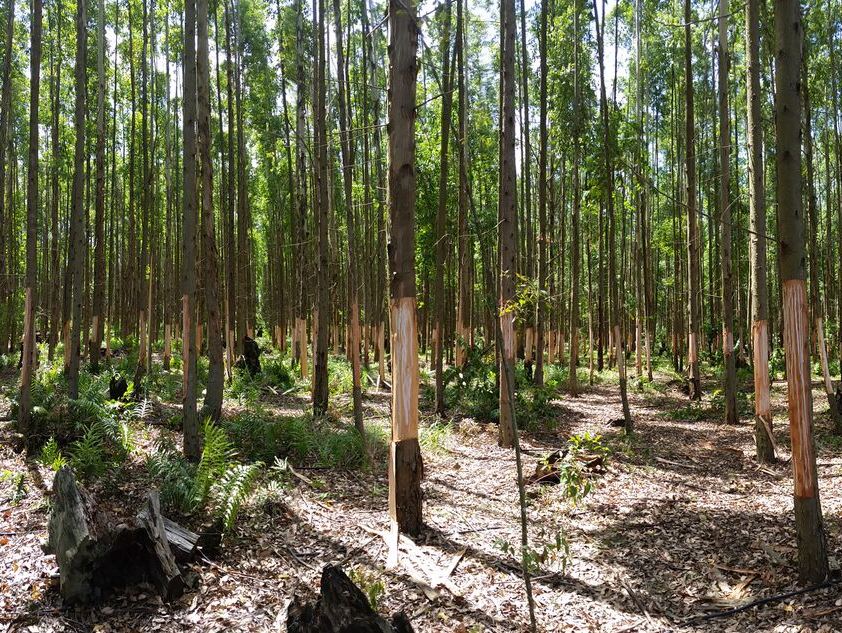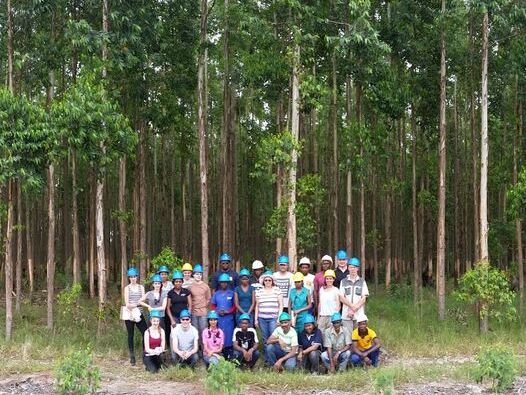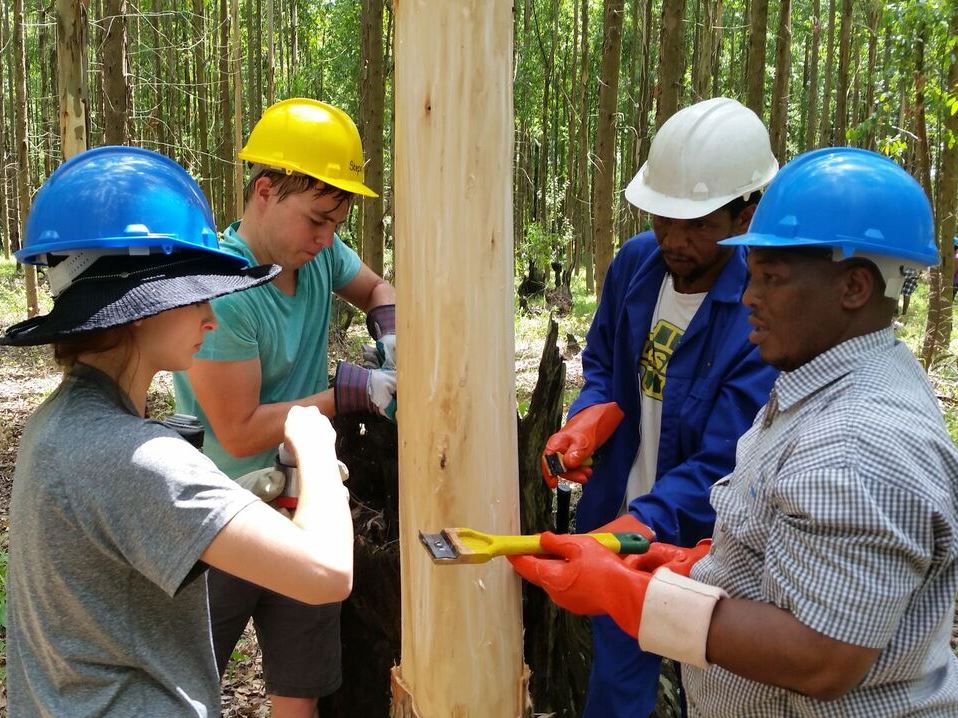New FABI paper in PNAS sets the publication bar high for 2017 2017-01-23
One of the first FABI papers for 2017 was published online on January 17th in the prestigious journal Proceedings of the National Academy of Sciences of the United States of America (PNAS) with an Impact Factor of 9.423. Three members of the Forest Molecular Genetics (FMG) Programme in FABI was involved in the work: Dr Eshchar Mizrachi was first author, with Prof. Zander Myburg the senior author, and Dr Nanette Christie a co-author together with a team of collaborators from Belgium, Canada and the USA.
In the paper, the team describes how they used network-based approaches (connecting genes with similar expression and functions) to unravel the molecular basis of wood formation. More specifically, the team pioneered a new approach called systems genetics that leverages the power of genetics in large numbers of trees. The team sampled genetic materials from developing wood of 156 Eucalyptus trees and profiled the expression of nearly 30000 genes in each tree. This enabled them to identify gene networks important for different wood structural and chemical properties. This information can be used for molecular breeding or genetic engineering of trees in an effort to develop a new generation of woody biomass crops supporting a thriving and sustainable bio-based economy.
The project was supported by the Department of Science and Technology (DST), the National Research Foundation (NRF), and Sappi through the Forest Molecular Genetics (FMG) Programme at UP.
DETAILS
Mizrachi E, Verbeke L, Christie N, Fierro AC, Mansfield SD, Davis MF, Gjersing E, Tuskan GA, Van Montagu M, Van de Peer Y, Marchal K, Myburg AA. (2017) Network-based integration of systems genetics data reveals pathways associated with lignocellulosic biomass accumulation and processing. PNAS 10.1073/pnas.1620119114


